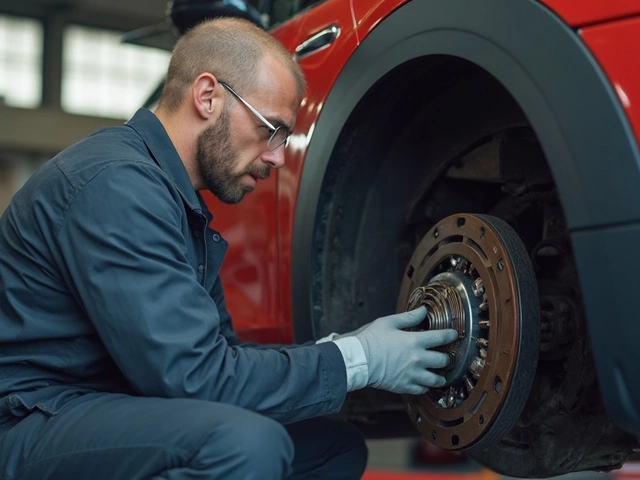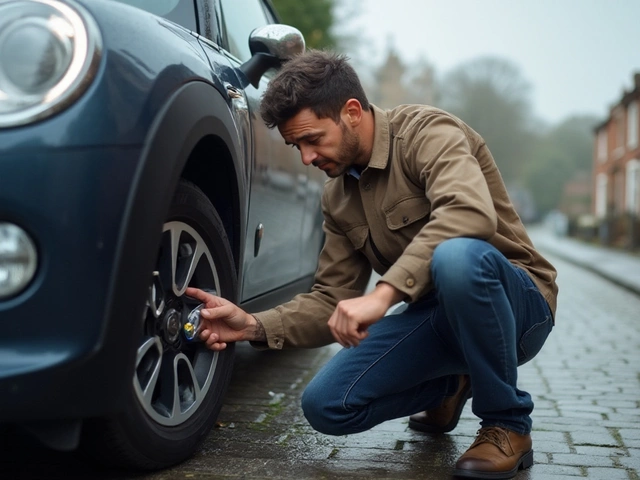Automotive Parts – Simple Guides for Everyday Drivers
Keeping a car in good shape means knowing the basics of the parts that keep it moving. Whether you’re swapping an air filter, checking brake pads, or figuring out if a bent suspension is safe to drive on, having clear, bite‑size info saves time and money. Below you’ll get quick answers to the most common part questions, plus a few DIY tricks you can try at home before you call the garage.
Common Parts You’ll Replace Often
Air filters are cheap but easy to ignore. A dirty filter chokes airflow, hurting fuel economy and engine life. If you notice a drop in power or your fuel gauge climbs faster than usual, pop the filter and compare it to a fresh one – you’ll see the difference right away.
Brake pads are the next big one. Changing just the rear pads can work if they wear evenly, but most experts recommend swapping both front and rear together. Uneven wear creates a pulling feeling when you brake and can shorten the life of the rotors.
Spark plugs on a healthy engine fire cleanly. Misfires, rough idling, or a drop in acceleration usually mean the plugs are fouled. Look for deposits or a worn electrode – if the gap is more than 0.04 inches, it’s time for new ones.
Clutch kits matter for manual drivers. A burning smell or slipping gear signal a clutch on its way out. While a full replacement needs a pro, you can check the clutch fluid level and look for leaks yourself.
Suspension components like shocks and springs keep the ride smooth. Bad shocks make the car bounce, and a bent suspension arm can cause uneven tire wear. If you feel a thudding or notice the car leans when turning, inspect the shocks for oil leaks or broken mounts.
DIY Tips and When to Call a Pro
Testing a fuel pump is easier than you think. Listen for a faint whirring sound when you turn the key to the “on” position – no sound usually means a failed pump. You can also check fuel pressure with a gauge; if it’s below the spec in your owner’s manual, replace the pump.
Want to know if you can drive with a bent suspension? Short trips are okay, but long drives amplify the risk of loss of control. If the car pulls to one side or the steering feels loose, book a repair fast.
Removing a rear windscreen wiper in the UK is legal, but it can affect your MOT if the area stays wet. If you live in dry weather, you might skip it, but keep the glass clean and check for any cracks.
Changing a car battery yourself is a solid weekend project. Disconnect the negative terminal first, remove the old battery, place the new one, then reconnect positive and negative. Wear gloves and don’t let tools bridge the terminals.
When you’re unsure, Northwich Tyres Centre can help. They stock a wide range of parts, from premium air filters to alloy rims, and their technicians can fit, align, and test anything you’ve bought. Swing by for a quick diagnostic or a friendly chat about which part is right for your car.
Remember, regular checks keep small problems from turning into pricey repairs. Keep an eye on the basics, try the easy DIY steps, and don’t hesitate to get professional help when the job feels beyond your skill set. Your car will thank you with smoother rides, better fuel mileage, and fewer surprise breakdowns.
 21 January 2025
21 January 2025
Do Spark Plugs Really Last for a Decade?
Exploring the longevity of spark plugs can lead to uncovering interesting facts about automobile maintenance. Usually seen as a small yet significant component of a vehicle, spark plugs play a crucial role in the engine's performance. While many claim these parts can last up to ten years, several factors can influence their durability. This article delves into what impacts spark plug lifespan and offers valuable tips on maintaining them for maximum performance and longevity.
Latest Posts
-

Car Suspension Parts: What They Are and Why They Matter
-

Can a Brand New Clutch Slip? Unraveling the Mystery
-

Identifying Bad Shock Absorber Noises in Your Vehicle
-

What Are the Signs of a Clogged Fuel Injector? Expert Guide to Identifying Fuel Injector Issues
-

How to Recognize Signs of Bad Front Suspension in Your Vehicle

0